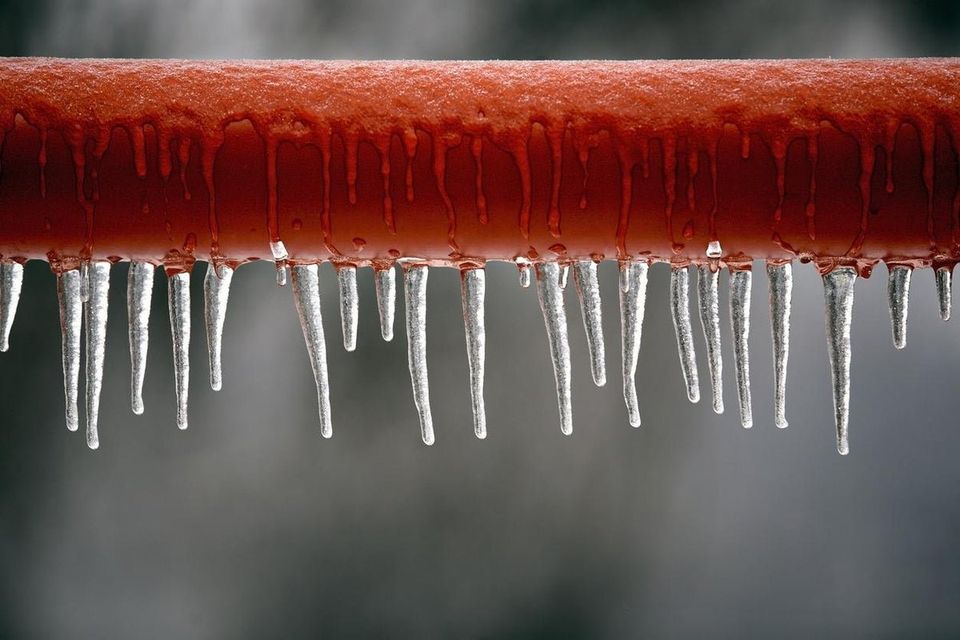Tips to Avoid Frozen Plumbing in Cold Weather: Expert Guidance
Tips to Avoid Frozen Plumbing in Cold Weather: Expert Guidance
Blog Article
What are your concepts on How To Avoid Freezing Pipes?

Cold weather can damage your pipes, particularly by freezing pipes. Here's exactly how to stop it from happening and what to do if it does.
Introduction
As temperatures decrease, the danger of icy pipelines boosts, possibly resulting in expensive repair services and water damages. Comprehending exactly how to avoid frozen pipes is important for property owners in chilly climates.
Comprehending Frozen Pipes
What causes pipelines to ice up?
Pipes freeze when revealed to temperature levels below 32 ° F (0 ° C) for extended durations. As water inside the pipelines ices up, it broadens, putting pressure on the pipeline wall surfaces and possibly causing them to break.
Dangers and damages
Icy pipes can result in water supply disturbances, home damage, and costly repairs. Burst pipelines can flood homes and create comprehensive architectural damage.
Indications of Frozen Piping
Determining icy pipelines early can avoid them from bursting.
Exactly how to determine icy pipelines
Seek decreased water circulation from taps, unusual smells or sounds from pipes, and visible frost on revealed pipes.
Prevention Tips
Insulating susceptible pipes
Cover pipelines in insulation sleeves or use heat tape to safeguard them from freezing temperatures. Focus on pipes in unheated or external locations of the home.
Home heating strategies
Maintain interior spaces appropriately warmed, specifically locations with pipes. Open cabinet doors to allow cozy air to distribute around pipes under sinks.
Protecting Exterior Plumbing
Garden tubes and outside faucets
Separate and drain garden pipes before winter. Set up frost-proof spigots or cover outside taps with protected caps.
What to Do If Your Pipelines Freeze
Immediate actions to take
If you suspect frozen pipelines, keep taps open to soothe pressure as the ice melts. Make use of a hairdryer or towels soaked in hot water to thaw pipelines slowly.
Long-Term Solutions
Structural changes
Consider rerouting pipes far from outside walls or unheated areas. Add added insulation to attic rooms, cellars, and crawl spaces.
Updating insulation
Buy high-quality insulation for pipes, attic rooms, and wall surfaces. Appropriate insulation aids preserve constant temperature levels and decreases the threat of frozen pipes.
Final thought
Protecting against icy pipelines calls for aggressive actions and fast actions. By recognizing the reasons, indications, and preventive measures, property owners can protect their pipes throughout cold weather.
6 Proven Ways to Prevent Frozen Pipes and Protect Your Home
Disconnect and Drain Garden Hoses
Before winter arrives, start by disconnecting your garden hoses and draining any remaining water. Close the shut-off valves that supply outdoor hose bibs and leave the outdoor faucet open to allow any residual water to drain. For extra protection, consider using faucet covers throughout the colder months. It’s also important to drain water from any sprinkler supply lines following the manufacturer’s directions.
Insulate Exposed Pipes
Insulating your pipes is an effective way to prevent freezing. Pipe insulation is readily available at home improvement stores and is relatively inexpensive. Pay close attention to pipes in unheated areas such as the attic, basement, crawl spaces, or garage. Apply foam insulation generously to create a buffer against the cold. You can also wrap your pipes in heat tape or thermostat-controlled heat cables for added warmth.
Seal Air Leaks
Inspect your home for any cracks or openings that could let in cold air. Seal any holes around the piping in interior or exterior walls, as well as the sill plates where your home rests on its foundation. Additionally, make sure to keep your garage door closed unless you’re entering or exiting. Leaving it open creates a significant air leak that can lead to frozen pipes.
Allow Warm Air Circulation
During cold snaps, it’s essential to allow warm air to circulate evenly throughout your home. Leave interior doors ajar to promote better airflow. Open kitchen and bathroom cabinets to help distribute heat consistently around the rooms. If you have small children or pets, be sure to remove any household chemicals or potentially harmful cleaners from open cabinets for safety.
Let Faucets Drip
A small trickle of water can make a big difference in preventing ice formation inside your pipes. When temperatures drop significantly, start a drip of water from all faucets served by exposed pipes. This continuous flow helps prevent the water from freezing. Additionally, running a few faucets slightly can relieve pressure inside the pipes, reducing the chances of a rupture if the water inside does freeze.
https://choateshvac.com/6-proven-ways-to-prevent-frozen-pipes-and-protect-your-home/

Do you like more info about Prevent Frozen Pipes ? Try leaving a remark directly below. We will be pleased to listen to your reactions about this entry. We are looking forward that you come back again later on. Sharing is caring. One never knows, you may just be helping someone out. We truly appreciate your readership.
Contact Report this page